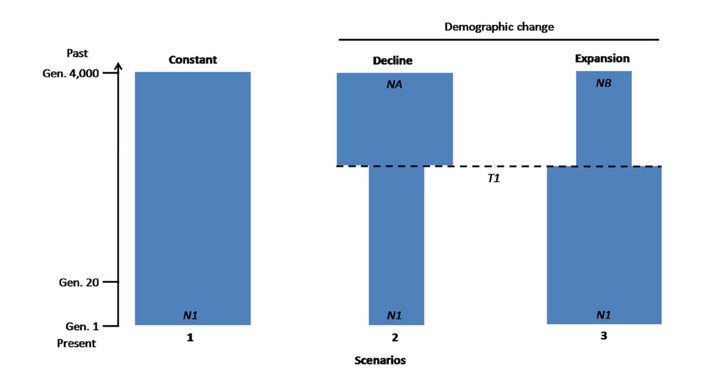Mixed Fortunes - Ancient Expansion and Recent Decline in Population Size of a Subtropical Montane Primate, the Arunachal Macaque Macaca munzala
 Image credit: Debapriyo Chakraborty
Image credit: Debapriyo Chakraborty
Abstract
Quaternary glacial oscillations are known to have caused population size fluctuations in many temperate species. Species from subtropical and tropical regions are, however, considerably less studied, despite representing most of the biodiversity hotspots in the world including many highly threatened by anthropogenic activities such as hunting. These regions, consequently, pose a significant knowledge gap in terms of how their fauna have typically responded to past climatic changes. We studied an endangered primate, the Arunachal macaque Macaca munzala, from the subtropical southern edge of the Tibetan plateau, a part of the Eastern Himalaya biodiversity hotspot, also known to be highly threatened due to rampant hunting. We employed a 534 bp-long mitochondrial DNA sequence and 22 autosomal microsatellite loci to investigate the factors that have potentially shaped the demographic history of the species. Analysing the genetic data with traditional statistical methods and advance Bayesian inferential approaches, we demonstrate a limited effect of past glacial fluctuations on the demographic history of the species before the last glacial maximum, approximately 20,000 years ago. This was, however, immediately followed by a significant population expansion possibly due to warmer climatic conditions, approximately 15,000 years ago. These changes may thus represent an apparent balance between that displayed by the relatively climatically stable tropics and those of the more severe, temperate environments of the past. This study also draws attention to the possibility that a cold-tolerant species like the Arunachal macaque, which could withstand historical climate fluctuations and grow once the climate became conducive, may actually be extremely vulnerable to anthropogenic exploitation, as is perhaps indicated by its Holocene ca. 30-fold population decline, approximately 3,500 years ago. Our study thus provides a quantitative appraisal of these demographically important events, emphasising the ability to potentially infer the occurrence of two separate historical events from contemporary genetic data.
#Supplementary notes can be added here, including code and #math.